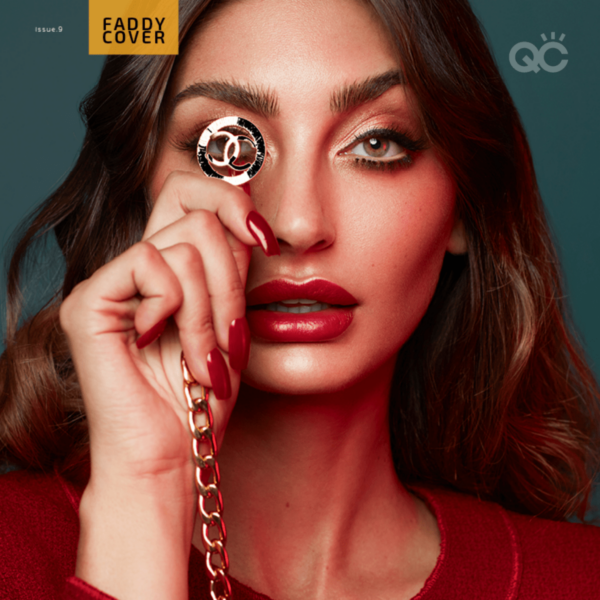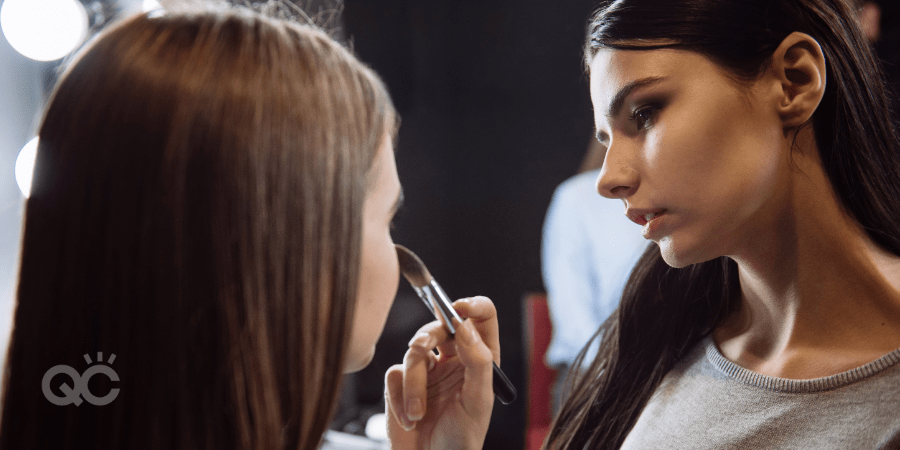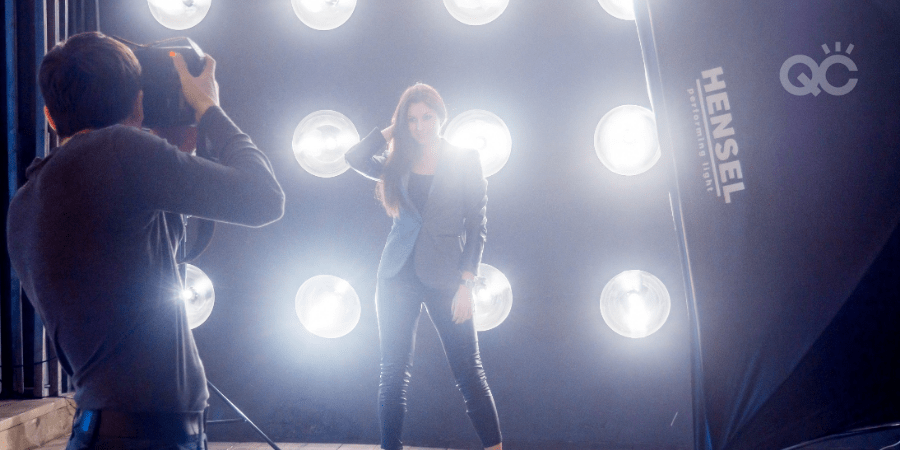Building your editorial makeup portfolio? Renowned MUA, Charlotte Ravet, reveals 5 mistakes you need to AVOID making!
Charlotte is the proud owner of her very own hair and makeup business, A Date With Charlotte. From bridal, to editorial, to film and television, and everything in-between – Charlotte’s extensive makeup training allows her to provide a wide variety of services that cater to ALL types of clientele!
Her extensive resume includes working for Prada, L’Oreal, and even the cast of the hit show, Glee! A developer of educational programs, Charlotte has even been awarded Best Makeup Educator of the Year by the Australian Industry Makeup Awards.
Building Your Editorial Makeup Portfolio as a Newbie
As an MUA, you will build your makeup portfolio over the years. Now, starting your portfolio from scratch might sound overwhelming at first. But with the right strategies, you’ll quickly build relationships and take part in jobs that’ll provide you with quality photos of your work.
Even as an industry professional, I am constantly building my makeup portfolio. As the standard, I make sure to include important publication work, as well as looks I’m especially proud of. On top of that, I also try to display my most recent work. For me, this means it’s 3 years old or less.
Here’s the problem: if you don’t know what you’re doing, it can be all too easy to put together a BAD makeup portfolio. The key to avoiding this is to not make amateur mistakes. It’s natural to have a few hiccups in the beginning (that’s what learning is all about, after all). But you can bypass a lot of these common errors by following the tips I’m about to discuss.
So, here are a few things I have learned throughout my career that can help you today. In fact, these are all things I wish someone has told ME not to do in my makeup portfolio when I first got started!

Photo by Anniss+Barton Photography.
5 Mistakes to Avoid in Your Editorial Makeup Portfolio
1. Choosing the Wrong Model
Your best friend might be stunning, but that doesn’t mean she’ll be a great model on camera. One of the most important parts of your makeup portfolio is showcasing the right models. So, you’ll need to choose them wisely!
The quality of editorial work is largely based on the model and how they portray your makeup look. When seeking out models, remember: “photogenic features” does not simply mean the person is pretty. Rather, it also means interesting and unique. Your model should also know how to pose (and have more than one pose in their arsenal).
How to Choose the RIGHT Model
So, how should you go about finding the right models for your makeup portfolio? Start by taking a look at their portfolio of work!
You’ll want to see variety in their photos. Take a close look at their poses and expressions. Keep an eye out for any singularities, too. For example, do they have freckles? Curly hair? A cute gap between their tap? It’s never a bad thing to have a model with discernable features that help them to stand out!
Your model needs to best suit the makeup you will create. If you’re going for something creative, you might be looking for specific features in your model. Good skin is also really important, since blending needs to be flawless (and with a light coverage) for editorial work.

Photo by Anniss+Barton Photography.
2. You Only Showcase ‘Creative’ Looks
Creative makeup is very popular amongst MUAs. After all, it’s one of the best ways we can express ourselves. You might love using bright colors, glitters, and textures. (I do, too!) However, your makeup portfolio shouldn’t only demonstrate creative looks.
If it does, you might put off potential clients. It could also give the wrong impression: that this type of makeup is all you can do. Clients will seek out makeup artists who can bring their visions to life. If you only show one specific style and it doesn’t align with theirs, you’ve just missed out on a booking opportunity.
How to Showcase Variety
Your makeup portfolio should display a variety of different looks and styles. For example, the most requested look tends to be the “no makeup” look. If you do editorial makeup, chances are good that you’ll work for fashion labels and skincare brands. Look at the advertisements to get a proper idea of what’ll be expected from you.
You’ll notice that very often, the model’s makeup is quite natural. Even if it’s not what excites you the most, this is the type of makeup which can give you regular, paid work. This is just one example, of course. But it illustrates the importance of showcasing different sides of your makeup skills in your professional portfolio.
If you want to broaden your range and master many different types of makeup, professional training is the best recommendation I can give you. So, get certified and learn the skills needed to create ANY type of editorial look!

Photo by Anniss+Barton Photography.
3. You Don’t Understand the Story
An editorial series is often created around a story. The story is the actual mood; the link between the looks you’ll create. For example, an editorial series could be ‘80’s makeup with a modern twist’ or ‘colorful summer outwear’. If you don’t understand the story behind the series, your makeup won’t reflect the message your client is trying to get across.
It’s very important to clearly identify the expectation of your client and/or the photographer. Your makeup might not be the focal point of the image. Plus, the makeup will also need to work with the hairstyle, the lighting, the clothes, and the model themselves. If the looks needs to be more natural in order to create a beautiful image, that’s just the way it is!
I’ve often worked for hairdressers, creating a collection for awards. Very often, the hair is creative and colorful. While the makeup can be slightly creative, too, the focus is meant to be the model’s hair. As such, it would be a mistake to create overly avant-garde makeup for this type of shoot.
How to Understand the Story
Communicate with the client and/or the photographer! If the story behind the shoot is unclear to you, don’t be afraid to ask questions. It’s better to admit you need some guidance than it is to stay silent and produce the wrong results. The latter will just waste everyone’s time and give off a bad impression on your part.

Photo by Anniss+Barton Photography.
4. Your Editorial Makeup Portfolio Lacks Editorial Looks
It’s sometimes hard to explain what editorial makeup is. After all, you can find a lot of different styles which will work well when photographed. There’s no “one-size-fits-all” definition.
Still, the whole purpose of your editorial makeup portfolio is to display, well, editorial makeup. You’ll need to showcase at least some of the standard techniques/elements within your work. And it shouldn’t just be one technique used on a bunch of different models either. There are tons of different techniques you can demonstrate, so take advantage of that!
How to Create an Editorial Makeup Style
Here are a few tips for creating an editorial look in your makeup portfolio that’s suitable for magazines:
- Keep the skin natural! Use color correction, skincare, and cream contour for the most natural result. Avoid thick foundation and apply powder very lightly.
- Be careful with concealers! It’s easier for a photographer to edit a small breakout with no makeup than trying to correct layers of concealer. If your model has a small breakout, you can leave it with no makeup on.
- The foundation color matches both the face and body perfectly! You’ll notice that very often, the skin on the body is slightly more yellow than the face. If you create a pink complexion on the face, but then your model rests her face on her shoulder, the difference WILL be noticeable.
- Be careful with the eyebrows! Filling up all of the model’s eyebrows with product is not going to work for editorial makeup. Instead, focus on creating natural eyebrows by using feathering movements with an angle brush. You can also conceal the eyebrows using a bit of concealer and a mascara wand.
- Play with texture! Shimmer products are not the only way to create highlights. A lip balm applied on the cheekbones will create a beautiful glass skin effect.

5. You’re Not Prepared
Beautiful images for an editorial makeup portfolio require work and preparation. Before applying makeup on your model, you should have a clear idea of what the lighting is, what the editing will look like, and what the final images should (ideally) look like. I have also learned that reaching out to photographers with some ideas is a great way to build a relationship and begin a collaboration.
How to Go Into a Job Prepared
Instead of simply sending a link to your website and asking for a meeting, share the moodboards you’ve created with the photographers you want to work with! Great photographers are often busy. If you want to get their attention, show them that you’re also a trustworthy professional who has ideas!
Then, once you’ve discussed and finalized a moodboard, you can plan your looks ahead of time, in preparation for the shoot. That way, when the time comes, you’ll be fully prepared and ready to do your best work!

My Final Advice for Your Editorial Makeup Portfolio
When working on photoshoots and building up your portfolio, remember to always be yourself! Be unique and love what you do. Exposing yourself artistically is also exposing yourself to criticism – and that’s fine! You can’t please everyone and this is okay. Always reach for the best you can do, be organized and professional, and enjoy every minute of the creative process.
Ultimately, this will be your key to a strong makeup portfolio – and your career’s success!
